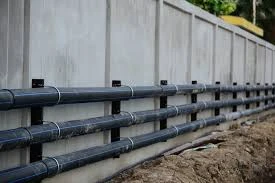Nov . 21, 2024 11:05 Back to list
pvc pipe fittings
Understanding PVC Pipe Fittings A Comprehensive Guide
PVC (Polyvinyl Chloride) pipe fittings have become a fundamental component in various plumbing systems and construction projects worldwide. Known for their durability, cost-effectiveness, and resistance to corrosion, PVC fittings are widely used in both residential and commercial applications. In this article, we will explore the various types of PVC pipe fittings, their applications, installation processes, benefits, and maintenance considerations.
Types of PVC Pipe Fittings
PVC pipe fittings come in an array of shapes and sizes, each designed for specific applications. The most common types include
1. Elbows These fittings are used to change the direction of the pipe—available in 90-degree and 45-degree angles. 2. Tee Fittings Shaped like the letter 'T', these fittings allow for branching connections, permitting the flow of liquid in multiple directions.
3. Couplings These are used to connect two lengths of pipe. Couplings can be either slip types (going directly over the pipe ends) or threaded types for enhanced security.
4. Adapters These fittings help connect PVC pipes to different piping materials, such as metal or polyethylene.
5. Caps and Plugs Caps are used to close off the end of a pipe, while plugs are inserted into the fitting where there is no need for a pipe connection.
Applications of PVC Fittings
PVC pipe fittings are found in various applications across multiple industries. They are commonly used in
- Residential plumbing For water supply lines, drainage systems, and irrigation systems. - Construction In the installation of HVAC systems, cooling systems, and in venting applications. - Agricultural use For irrigation systems and solutions that require resistant piping.
Advantages of PVC Pipe Fittings
The popularity of PVC fittings can be attributed to several advantages
pvc pipe fittings

- Durability PVC is resistant to corrosion, chemicals, and impact, making it a reliable choice for a variety of environments. - Lightweight Compared to metal fittings, PVC is much lighter, leading to easier handling and installation.
- Cost-effective Overall installation costs are reduced due to the lower price of materials and the ease of installation.
- Non-toxic PVC is safe for drinking water systems, adhering to regulations in many countries regarding potable water.
Installing PVC Pipe Fittings
Installation of PVC fittings can be straightforward, provided that proper techniques and tools are used. Key steps include
1. Preparation Cut the PVC pipe to the desired lengths using a saw. Ensure the ends are smooth.
2. Dry Fit Before applying solvent, assemble the pieces without adhesive to ensure a proper fit.
3. Application of Solvent Use a PVC primer followed by a cement. Apply it evenly to both the fitting and the pipe.
4. Joining Push the pipe into the fitting with a slight twisting motion to spread the adhesive evenly, and hold it in place for a few seconds.
Maintenance Tips
While PVC fittings require minimal maintenance, it is essential to occasionally check for leaks and ensure that connections remain secure. Avoid exposing PVC to extreme temperatures, and protect it from direct sunlight to prolong its lifespan.
In conclusion, PVC pipe fittings are a reliable and economical choice for various plumbing and construction needs. Their versatility and ease of use make them indispensable in modern infrastructure, promoting efficient water flow and drainage solutions. Understanding these fittings enhances the ability to make informed decisions in plumbing projects, ensuring durability and performance.
-
High-Quality PPR Pipes and Fittings Durable ERA PPR & PVC PPR Solutions
NewsJul.08,2025
-
Black HDPE Cutting Board - Durable, Non-Porous & Food Safe HDPE Plastic Cutting Board
NewsJul.08,2025
-
High-Quality CPVC Panel Durable HDPE & PVC Panels Supplier
NewsJul.08,2025
-
Double PE Welding Rod Supplier - High Strength, Durable & Versatile Welding Solutions
NewsJul.07,2025
-
High-Quality PVC-O Pipe Supplier Durable 75mm PVC Pipe & Connections Leading PVC Pipe Company
NewsJul.07,2025
-
HDPE Drainage Pipe Supplier – Durable & Corrosion-Resistant Solutions
NewsJul.06,2025

